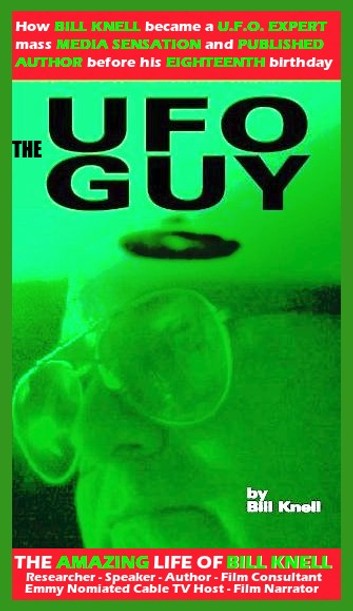|

Nicola Tesla is as much man as he is legend. Born into a Serbian family during 1856 in what used to be the Austrian Empire, Tesla became a modern Merlin by inventing all sorts of amazing contraptions, providing the electrical power necessary for an economy increasingly dependent on it and creating an electronic revolution based on his theories and ideas. Considered the father of Alternating Current (AC power), the means to distribute it and the AC motor, he also demonstrated the first use of wireless communication in 1894 and made the impossible possible.
Tesla is credited with taking theoretical ideas and making them into practical projects and useful inventions. Many consider his work to be the birthing table of remote control, computers, robotics, radar and other modern marvels. Tesla became the father of most twentieth century technology. Apart from his own genius, Tesla had the good sense and intelligence to build on the work of others. While attending the Charles-Ferdinand University in Prague during 1880, he was heavily influenced by the work of Ernst Mach. Mach was a physicist from Austria that studied and photographed spark and ballistic shock waves.
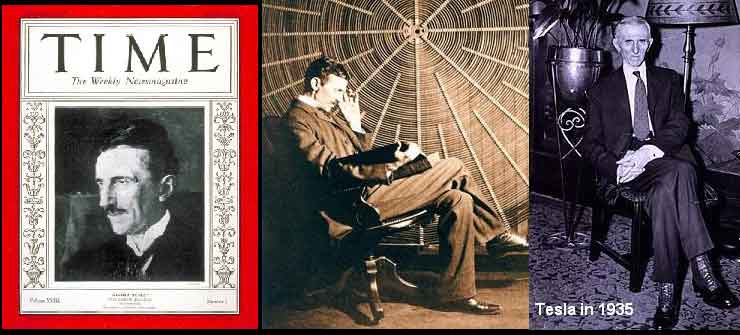
Nicola used his time at University to read as many books about physics, engineering and related subjects as he could. Said to have a photographic memory, he didn’t just memorize the books; he interpreted them to his own advantage. These interpretations came to him as sudden inspirations in the forms of flashes of light which took shape into pictures in his mind. Tesla believed that anything he could imagine or picture in his mind, he could design and build. During his later years, Tesla proposed the idea of a thought photography machine which could capture things like his own inspirational flashes on film. A friend of Tesla was witness to one of his inspirational flashes. Tesla was walking through a Belgrade park in 1882 and talking with him when Nicola stopped dead in his tracks and was silent. His friend thought that he was having some sort of an attack, seizure or stroke and encouraged him to sit down on a nearby bench. Tesla regained his composure, but would not sit down until he walked over to a children’s play area and drew plans for his AC power distribution system and motor in the sand. Committing them to memory, he later copied them on to paper. After moving to Budapest, Hungary, Tesla worked as chief electrician to the first telephone company there and invented a phone amplifier which led to the development of the first loudspeaker. In 1882 he moved to Paris, France, to work for the Continental Edison Company. After expressing a desire to move to the United States and work for the Edison company there, Charles Batchelor wrote a letter of recommendation to Thomas Edison which stated, “I know two great men and you are one of them; the other is this young man.” However, this was anything but a match made in heaven. A number of his biographers claim that Tesla was offered $50,000 to redesign Thomas Edison’s inefficient electric generating system. After working seven days a week and almost twenty hour days for quite some time, Edison delivered an improved system to Edison and came to claim his reward. Thomas Edison reportedly said, “Tesla, you don"t understand our American humor” and refused to pay him anymore than the base wage of about eighteen dollars a week that he was receiving at the time. After asking for a raise to twenty-five dollars a week and being refused that amount, Tesla parted ways with Edison. Part of the problem was that Edison believed in Direct Current and could not accept Tesla’s AC poly phase design. Tesla dug ditches for a time to survive while he developed the brushless AC induction motor, the Tesla Coil and single node vacuum tubes which allowed the development and use of X-ray technology in the medical field. He demonstrated his induction motor to the American Institute of Electrical Engineers in 1888 and soon went to work for George Westinghouse in Pittsburg, Pennsylvania, where the company labs were located. Westinghouse liked his ideas about poly phase systems which allowed transmission of AC power over long distances. In 1891, Nicola Tesla became a naturalized American Citizen and established his own laboratory in New York City. Patents for his poly phase power system were granted in 1891-1892 while he continued to work on improvements and innovations for power generation, magnetism and the invention of radio transmissions as a means of remote control. He was eventually able to generate one million volts of AC power, an amount undreamed of at that time. But that was just the beginning. What he really wanted to do was to create a system by which generated power could be wirelessly transmitted.
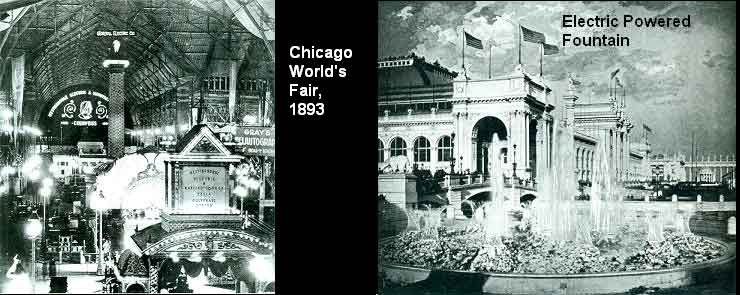
The first fruits of his genius were displayed to awe struck crowds at the 1893 Chicago World’s Fair. With the cooperation of and financing provided by Westinghouse, Tesla illuminated the entire Chicago exposition using his AC power system and twelve 1000 horse power two-phase generators. Electrically-powered water fountains were featured throughout the fairgrounds. Tesla had his own exhibit which featured marvels like his Egg of Columbus (or Tesla Egg). It was an egg made of copper which used principles of the rotating magnetic field and an induction motor to make it stand on end. His switching disc (which created high-frequency AC power) and other devices were also on display.

Despite his successes, Tesla found himself stuck in the middle of an electrical power war between Thomas Edison and George Westinghouse. The DC verses AC dispute nearly bankrupted both parties and generated a lifetime of rivalry, revenge and retribution. As a favor and sign of support and appreciation to Westinghouse, Nicola released him from his contract in 1897. That allowed Westinghouse to forego the payment of a huge amount of royalties due Tesla for use of his patents. The conflict never slowed Nicola down. During this time he invented a spark plug for gasoline engines and laboriously researched radiation. That work lead to a better understanding of cosmic rays and, later, the development of a directed energy weapon.
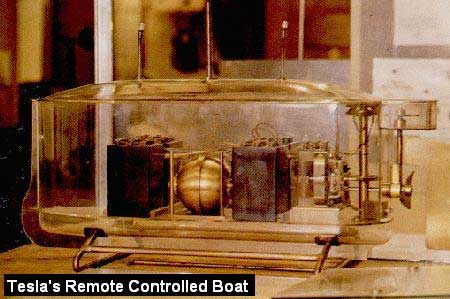
Tesla had high hopes for an idea he had concerning remote-controlled weaponry which lead him to file a patent for the first wireless radio transmission system. In 1898, he demonstrated a radio-controlled submarine style boat and remote-controlled torpedo system which he tried to sell to the U.S. Military. The boat actually had an early radio signal detector and logic gates. It was his first Teleautomaton or robotic vehicle. Tesla demonstrated it at Madison Square Garden and told those that attended, “You see there the first of a race of robots, mechanical men which will do the laborious work of the human race.” Some would argue that Tesla’s time in Colorado Springs, Colorado, was the best and worst of times for him. He arrived there in 1899 and told reporters he was building a laboratory to work on the wireless transmission of telegraph signals throughout the world. However, he was actually more interested in the wireless transmission of power using the earth as a conductor and wanted to use his Colorado facility to experiment on and perfect a system that could do just that. Tesla successfully transmitted wireless power to receiving devices in the area, but also managed to blackout the entire city of the Colorado Springs and set their only power generator on fire. Nicola later replaced that generator at his own expense which healed a large rift between himself and the local population. During his time in Colorado Springs, Tesla managed to wirelessly light over 200 lamps that were twenty-five miles away from his lab. He also developed practical versions of many of his theoretical ideas to link power and radio transmissions into one transmission and receiving system. While working on all this, Nicola interpreted odd clicks that he received in numerical order as the radio transmissions of aliens from nearby worlds. Many believe it was merely the result of space noise or a misunderstanding of the new technologies he was using. Others aren’t so sure. It’s been sadly reported that many prototypes of some of Tesla’s greatest and most amazing inventions were lost after he closed the lab in 1900 and sold its contents to pay off debts. The lab building was eventually demolished. After leaving Colorado Springs, Tesla managed to get a grant for $150,000.00 from notorious financier J. Pierpoint Morgan to build his famous Wardenclyffe facility on Long Island. Tesla devised an amazing wireless system to link the world through telephone and telegraph transmissions, which also had the capability to instantly transit photos, moving pictures and electronically generated text to global receiving points. Worldwide politics, government meddling, budget overruns and funding fears caused the premature shutdown of his Wardenclyffe project before it could be completed.
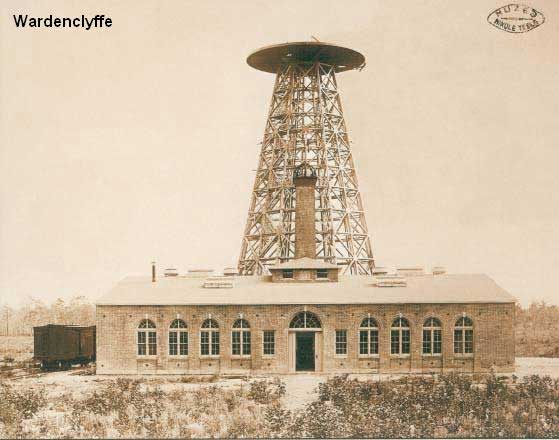
During the period of 1900 until the end of World War One in 1918, Tesla became the fall guy for blame on many fronts. His failure to file patents for some of his best inventions caused distrust among financiers and lead some in the government to believe he was signing secret agreements with foreign governments not sympathetic to American ideals and policy. In 1917, the Wardenclyffe facility was seized and destroyed by U.S. Marines sent in by the Federal Government. They believed the place was crawling with German Spies and might be used as a weapon against Americans. There was never any truth in that accusation. It’s more likely that local, state and federal politicians just didn’t understand what he was trying to accomplish and didn’t want the responsibility of having to explain any disasters or large scale power failures his project might cause. Tesla was a patriotic American that refused to sell inventions to foreign powers that might have given them an advantage over U.S. forces. He was also notoriously inept when it came to handling money and many of the patents he had might never have been filed at all except for the constant badgering he received from associates and colleagues that helped with the paperwork. Apart from his own lack of concern for his own financial stability, Tesla made a lifetime enemy when he crossed electrical currents with Thomas Edison. Many believe that Edison used his status as a native born American and reputation as an inventor to turn government authorities and venture capitalists against Nicola. The first sign of enemies working behind the scenes against Tesla was an action by the U.S. Patent Office which reversed its decision to award Nicola the patent for radio. Instead, they awarded it to Guglielmo Marconi who filed his own patent papers months after Tesla. Despite the fact that Tesla’s oscillator was the very basis for Marconi’s patent and was well known throughout the world by that time, the U.S. Patent Office called the idea that Marconi knew about Nicola’s oscillator “absurd.” Nicola should have filed his patent for radio much earlier, but his lazy attitude toward paperwork cost him dearly and never allowed him to regain the patent during his lifetime. It wasn’t until after his reported death in 1943 that the U.S. Supreme Court upheld Tesla’s radio patent declaring him the actual inventor of radio. After Tesla’s claims that he had communicated with extraterrestrials and word spread about some of his more exotic inventions including a ‘death ray’ based on his work with and research of radiation, plasma energy and X-rays, reporters began to portray Nicola as a mad scientist. Comic books and cartoons followed suit by naming a villain after him. However, many in the scientific and engineering communities considered Tesla a visionary and few doubted his intellect. Able to speak at least eight languages fluently, the soft-spoken genius with a flair for scientific showmanship ingratiated himself to almost everyone that met or saw him in person. Shortly before his death in 1931, Thomas Edison admitted that his greatest mistake was developing Direct Current, instead of using Tesla’s Alternating Current ideas and means of power distribution. Tesla was less generous. After Edison died, he pointed out that Edison had a contempt for book learning that cost him dearly in terms of productivity and the time it took him to develop inventions. Tesla felt that inspiration was important, but no more so than possessing the knowledge that can only be learned by studying the work, theories and discoveries of those who came before. Tesla’s own major flaw was inventing things that were so futuristic they were often misunderstood, ignored or feared by people that lacked the vision he possessed to appreciate them. Tesla once said, “The present is theirs; the future, for which I really work, is mine." Nicola Tesla envisioned a future in which people communicated, exchanged information and traveled at light speed. He believed that his own amazing inventions would be the catalyst that would help bring the people of the world closer together. Generally opposed to war, most of the futuristic weapons he invented were designed as a means to prevent worldwide conflicts instead of propagating them. He imagined and spoke about energy weapons that could destroy whole fleets of ships and planes while they were still hundreds of miles away from their targets. He felt such devices would prevent the further development of war machines and weapons because the use of these things would become ineffective, rendering them obsolete. Tesla was able to produce a laser beam and, like a few other forward thinking inventors of his time, had already begun working on a directed energy weapon by the early 1900s. Some have blamed his work in this area for everything from the sudden explosion of ships to the still unexplained Tunguska blast in Siberia. In 1937, Tesla granted an interview to a New York Times reporter to explain the invention and development of his infamous Death Ray. Nicola said that his weapon “will send concentrated beams of particles through the free air, of such tremendous energy that they will bring down a fleet of 10,000 enemy airplanes at a distance of 250 miles from the defending nation"s border and will cause armies of millions to drop dead in their tracks.” The death ray may or may not exist and might have been little more than a flash of inspiration in Nicola‘s mind when he described it. Many of Tesla’s inventions were based on theoretical ideas and were a constant work in progress. However, this doesn’t mean he did not built prototypes which worked in the laboratory. He allegedly built a small working model of an anti-gravity air ship which operated on energy transmitted to it through the air. This ship could operate inside or outside of the atmosphere and resembled a flying saucer. Nicola’s ideas and inventions involving new sources of power caused shockwaves, figuratively and literally. While working at his office located at 46 Houston Street in Manhattan, Tesla returned to an earlier interest he had in waves and resonance which was originally ignited by the work of Ernst Mach. Nicola believed this might be another source of power that had been previously ignored by those who didn’t bother to look into it. As a result, he built a small device that became known as Tesla’s Earthquake Machine. More an experiment that was part of his resonance research than a device, Nicola tested it in 1897. Nothing happened when he first turned it on, so he fell asleep after hours of exhaustive work. While asleep, the device began causing vibrations akin to an earthquake. It’s said that if a police officer had not broken into his office and woke Tesla up, the device might have destroyed most of lower Manhattan and sank the Brooklyn Bridge. Always thinking ahead, Nicola Tesla believed it would soon be possible to built anti-gravity, teleportation and even time travel devices. Some believe that these ideas lead to his involvement with the infamous Philadelphia Experiment. That experiment allegedly began as a project to demagnetize ships against sophisticated German Mines attracted to the magnetized metal in naval vessels. The stamping procedure that was part of the ship building process caused the magnetism which was could also be detrimental to electronic devices on board and effected the performance of new technologies like radar. Because of a need to develop devices that would use sound detection as a means to protect harbors against unauthorized submarine entry, and the need to develop cloaking technology to protect military vessels against detection by enemy radar, those two goals were added to the original project. Physicists, mathematicians and engineers from Princeton University were allegedly brought on board to develop the technology necessary to achieve project goals which the military felt could all be worked on at the same time. Their work would begin at the Institute For Advanced Study located at Princeton University in New Jersey and conclude with testing at the nearby Philadelphia Naval Shipyard in Pennsylvania. The institute was the academic home of scientific luminaries like Albert Einstein, John Von Neumann and Robert Oppenheimer. All worked on government projects during World War II and much of their work remains classified. Despite the availability of talent from Princeton, people like John Von Neumann who allegedly worked on the Philadelphia Experiment were much younger and less experienced than Tesla. They did not have the knowledge possessed by him when it came to exploiting and controlling powerful electromagnetic fields or understanding resonance and sound waves. It’s generally believed that the development of technologies needed to accomplish the goals that were a part of the Philadelphia Experiment would not be possible at all without knowledge and abilities. According to some who claim involvement with the Philadelphia Experiment, Tesla was not a team player. He felt that the projects were moving too fast and that others involved were making errors in judgment in terms of their theories, ideas and expectations, especially when it came to the degaussing and stealth radar field experiments. It didn’t take Tesla long to realize that many of the younger academics attached to this project had secretly considered manipulating powerful electromagnetic fields to not only create a stealth field against enemy radar, but also attain complete optical invisibility of the vessel in question. Tesla did not oppose the idea, but he felt they were going about it in the wrong way and should have informed the military liaisons of their intentions. Tesla’s greatest complaint against how the degaussing, stealth radar field and invisibility would be accomplished may have involved placing the generators needed to create the power necessary for these tasks aboard the ships. He felt that the energy could just as easy be transmitted to the target in question. In fact, that would allow the effect to be used on most any military vessel, weapon or aircraft. A whole fleet of ships and planes could be protected from a single power plant located on a barge towed by a ship. It would also allow for the delicate adjustments needed to maintain and control the necessary fields. Such control, he argued, would not be possible with a huge power plant located on each ship. Tesla was correct in his assessment of the flaws he detected in the version of the technology being developed for the Philadelphia Experiment by the Princeton Academics. However, he probably didn’t realize that even long after his death, the giant shadow of Thomas Edison was still exerting pressure on Nicola’s work. Some of those that worked for Edison on early experiments with radar were now involved in a separate attempt to develop what was hoped to be a powerful new radar system for U.S. Ships. That system required huge amounts of power. Like Edison, his protégés had no faith in Tesla. They doubted his ability to create a workable system to transmit the amount of wireless power needed to run their radar and still power the stealth and optical invisibility devices. The Princeton Academics tried to keep Tesla in the dark as much as possible, but he was far more intelligent than they were and saw through what were trying to do. When he allegedly got wind of the involvement of some of the old Edison Company researchers, he realized what was happening and quit the project in 1942. His departure spelled doom for the Philadelphia Experiment. The first experiment in the Philadelphia Naval Shipyard brought mixed results. The ship involved became radar and optically invisible shocking Navy and other Military Officers viewing the test. Although the ship was safely degaussed without harming any of the electronic equipment on board, the same could not be said of most of the test animals involved. Animals were brought on board to test the results of the technology on living things. Many were badly burned or seemed to partially melt into the wooden deck and metal of the ship. After making some adjustments and still ignoring Tesla’s recommendations, another test was ordered. This was a sea trial with a crew on board. During this phase of the experiment, the ship again became degaussed, radar and optically invisible. However, technicians lost their ability to control the on board generators causing effects similar to those experienced by the animals during the first experiment and worse. Crew members were burned and some faded into the deck and superstructure of the ship. Others became invisible, transparent and a few just floated away. Without Tesla’s knowledge and ability to control such new and powerful technologies, the experiment never safely achieved the desired results. Instead, it went awry during later attempts causing a number of even more bizarre and unexpected results than the first shipyard or subsequent sea trial attempts. These included contact with Aliens, the opening of space/time portals and resultant time travel experiences. None of these new discoveries could be taken advantage of or developed in time to help with the war effort, but they were hardly something that the military would ignore for long. After the war, the military took another look at the original experiment and formed a committee of officers from the Navy, Marines, Army and Air Force to study what happened and develop a new program that would become the basis for future experiments involving space/time portals, time travel, mind control, teleportation and the manipulation of psychic powers. Tesla may have been an important part of their plans.
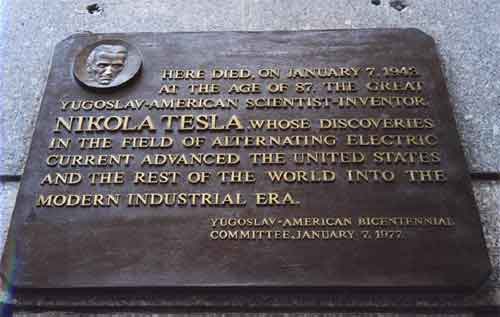
Shortly after his death in January of 1943, the FBI raided Tesla’s hotel room and offices. They removed a number of items including the entire contents of his safe. Most of Tesla’s papers were declared Top Secret. In an strange and still unexplained move, many of Tesla’s personal items and papers that were not considered a threat to national security were almost immediately sent back to his homeland (still occupied by Nazi forces at the time) by the U.S. Government. They used a special diplomatic Courier who flew into enemy territory and landed in an American military transport aircraft with Tesla‘s personal possessions on board. Many of these items are on display in the Nicola Tesla Museum in Belgrade and most of the personal papers are now apart of the Museum’s archive. His ashes are also kept inside a golden sphere at the Belgrade Museum.
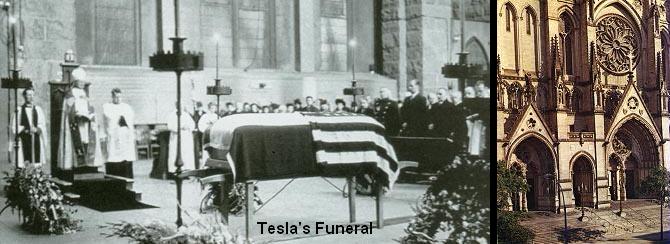
Despite the fact that the U.S. Government claims that Tesla never actually worked for them, the return of his personal items to the country of his birth by U.S. authorities during wartime and events at his funeral seem to suggest otherwise. His casket was covered with both an American and Yugoslavian Flag during the funeral. However, his casket was covered solely with an American Flag while being carried into and out of the Cathedral of St John The Divine by pallbearers which included several high-ranking members of the U.S. Military. The real question is whether or not Tesla actually died in 1943. Some witnesses claim to have seen Tesla working on later incarnations of the Philadelphia Experiment and other projects as late as the 1950s. Technically speaking, that would put him well into his 90’s during that time unless time travel was possible. Tesla’s life is not an open book and probably never will be. Even now the U.S. Government recently felt it necessary to state almost seventy years after his death that the FBI is not now and never has been in possession of his death ray. That is a narrow statement that isn’t fooling anyone. The FBI searched his premises after Tesla’s death and seized what they considered to be of importance. That doesn’t mean they actually found a working death ray machine. It’s more likely that plans and notes about that and many other inventions he had yet to build were confiscated. If a death ray was later built, that task would not have been accomplished by the FBI. Circumstantial evidence indicates that Tesla’s relationship with the U.S. Government was a tempestuous one at best and certainly allows for all kinds of guess work. For example, during the building of his Wardenclyffe facility on Long Island, a number of underground tunnels were constructed. These were to be used for various purposes involving his energy distribution system and are said to have extended for many miles in all directions. Though most are blocked off or cannot be easily accessed, many of these tunnels still exist and may have been used for experiments involving more updated versions of the Philadelphia Experiment in the area of and under the infamous Montauk Base. Witnesses have claimed for years that the old radar and military facility known as Camp Hero has been used for government projects involving time travel, invisibility, mind control and psychic powers. It’s important to understand that Tesla probably thought of and envisioned technologies that he knew most people in his day would not be able to comprehend or accept. His projects were almost always multi-faceted and it’s almost impossible to guess what he might have really been up to during various projects. I believe that he did achieve time travel and that the U.S. Government may have used his own inventions and work against him. It’s possible that the activation of the Wardenclyffe facility could have caused some sort of catastrophe or might have hindered future government experiments involving their projects at Montauk. If so, they could have sent someone back in time to stir up enough doubt about Tesla to cause the authorities responsible for national security in those days to close down and destroy Wardenclyffe. While all this may sound like wild speculation, when it comes to Tesla, no speculation is wild enough. Anyone that takes the time to study this genius, his theories and inventions will soon discover that he led no ordinary life and caused changes in our world that have yet to be fully seen or appreciated. Just the fact that most grade school students learn all about Thomas Edison, but may never even hear the name of Nicola Tesla during their courses of study, speaks volumes. And it’s not just all about secrecy. Nicola Tesla is not a subject for the lazy learner. He is a phenomenon and force of nature and it could easily take a lifetime to understand even a small portion of what he was trying to accomplish.
Book Titles We Highly Recommend - Informative and Fascinating - Helps To Support This Website



|




